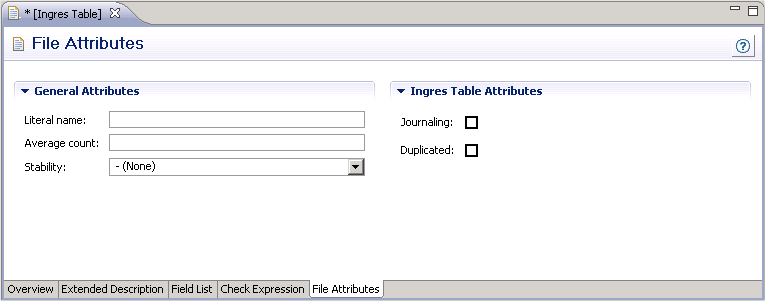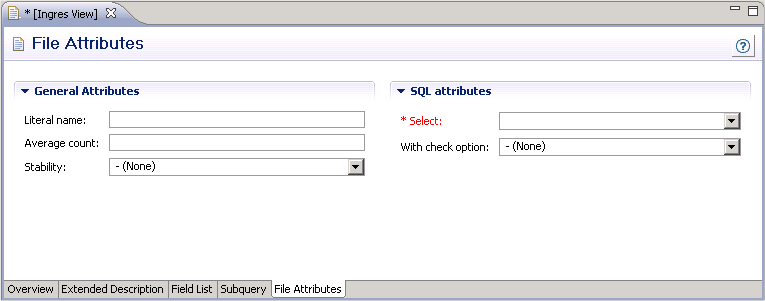Ingres tables and views can be documented in Predict with file objects
of type JT and JV respectively. These file objects can be used to generate DDMs
or CREATE TABLE/VIEW statements.
This document covers the following topics:
The following naming conventions apply to files documenting Ingres tables and views.
If the Predict parameter General Defaults > Miscellaneous > Upper/lower case / Object ID is set to L, the following attributes of Ingres objects are stored in upper and lower case as entered:
File ID (object IDs containing lower case letters are not recommended)
DV field expressions
SQL verifications
Check expressions
Constraint names
See also section Defaults in the Predict Administration documentation.
Table/View names for Ingres objects can have up to 24 characters.
A fully qualified ID (Creator + Hyphen + Table/View name) may not exceed 32 characters.
See overview of permitted characters in Naming Conventions.

Note
Parameters not listed below are described in other sections of
this documentation: Parameters common to all object types, for example Keys,
are described under Global
Attributes. Parameters common to all file types, for
example Literal name, are described under
Common File
Attributes. See also
Common
Parameters for SQL File Types.
| Parameters | |||||
|---|---|---|---|---|---|
| Journaling |
|
||||
| Duplicated |
|
||||

Note
Parameters common to all object
types, for example Keys, are described under
Global
Attributes. Parameters common to all file types, for
example Literal name, are described under
Common File
Attributes. See also
Common
Parameters for SQL File Types.